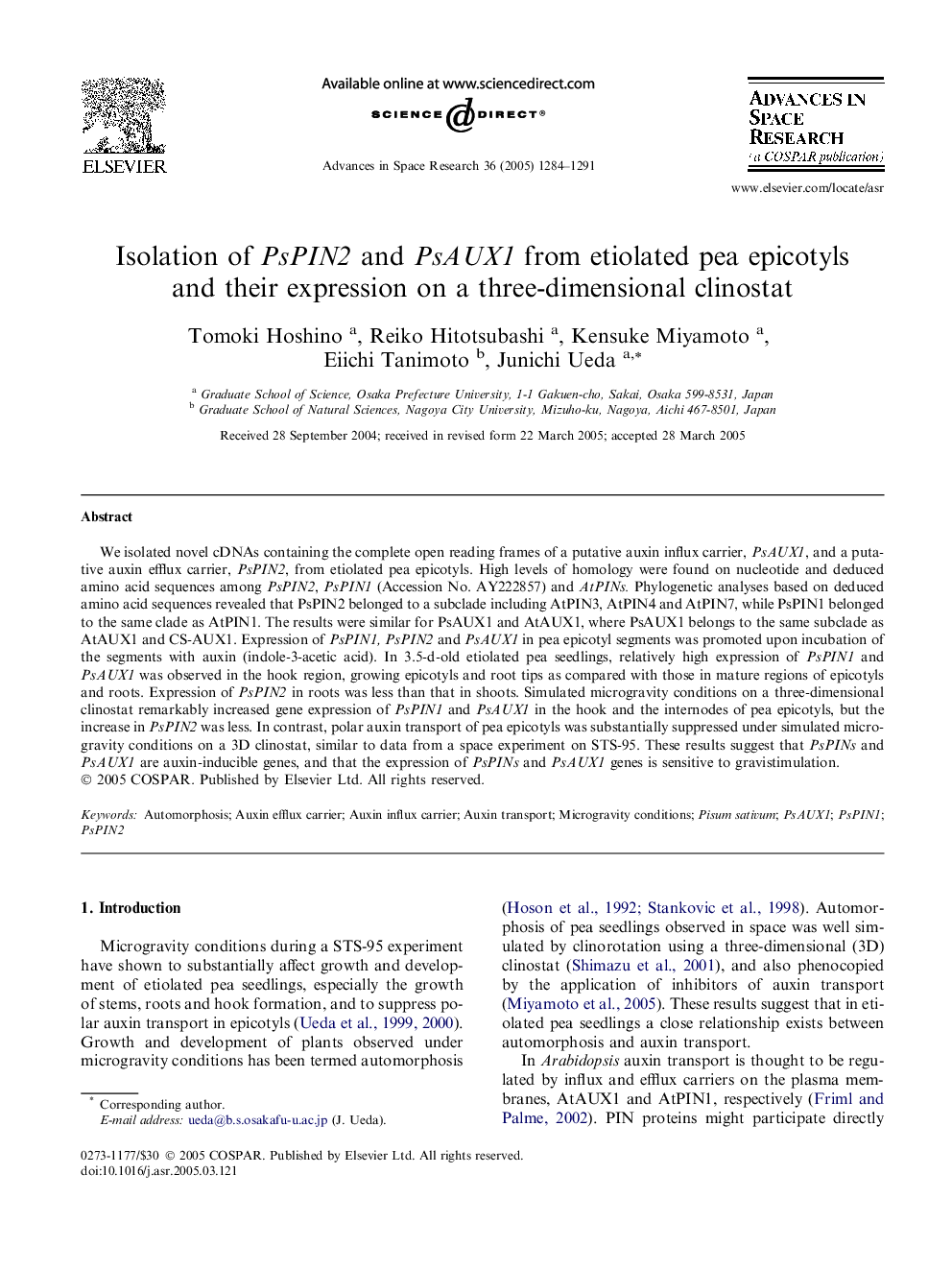| Article ID | Journal | Published Year | Pages | File Type |
|---|---|---|---|---|
| 10694699 | Advances in Space Research | 2005 | 8 Pages |
Abstract
We isolated novel cDNAs containing the complete open reading frames of a putative auxin influx carrier, PsAUX1, and a putative auxin efflux carrier, PsPIN2, from etiolated pea epicotyls. High levels of homology were found on nucleotide and deduced amino acid sequences among PsPIN2, PsPIN1 (Accession No. AY222857) and AtPINs. Phylogenetic analyses based on deduced amino acid sequences revealed that PsPIN2 belonged to a subclade including AtPIN3, AtPIN4 and AtPIN7, while PsPIN1 belonged to the same clade as AtPIN1. The results were similar for PsAUX1 and AtAUX1, where PsAUX1 belongs to the same subclade as AtAUX1 and CS-AUX1. Expression of PsPIN1, PsPIN2 and PsAUX1 in pea epicotyl segments was promoted upon incubation of the segments with auxin (indole-3-acetic acid). In 3.5-d-old etiolated pea seedlings, relatively high expression of PsPIN1 and PsAUX1 was observed in the hook region, growing epicotyls and root tips as compared with those in mature regions of epicotyls and roots. Expression of PsPIN2 in roots was less than that in shoots. Simulated microgravity conditions on a three-dimensional clinostat remarkably increased gene expression of PsPIN1 and PsAUX1 in the hook and the internodes of pea epicotyls, but the increase in PsPIN2 was less. In contrast, polar auxin transport of pea epicotyls was substantially suppressed under simulated microgravity conditions on a 3D clinostat, similar to data from a space experiment on STS-95. These results suggest that PsPINs and PsAUX1 are auxin-inducible genes, and that the expression of PsPINs and PsAUX1 genes is sensitive to gravistimulation.
Related Topics
Physical Sciences and Engineering
Earth and Planetary Sciences
Space and Planetary Science
Authors
Tomoki Hoshino, Reiko Hitotsubashi, Kensuke Miyamoto, Eiichi Tanimoto, Junichi Ueda,
